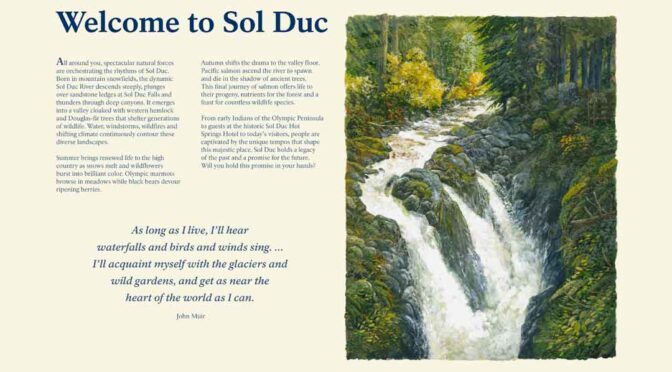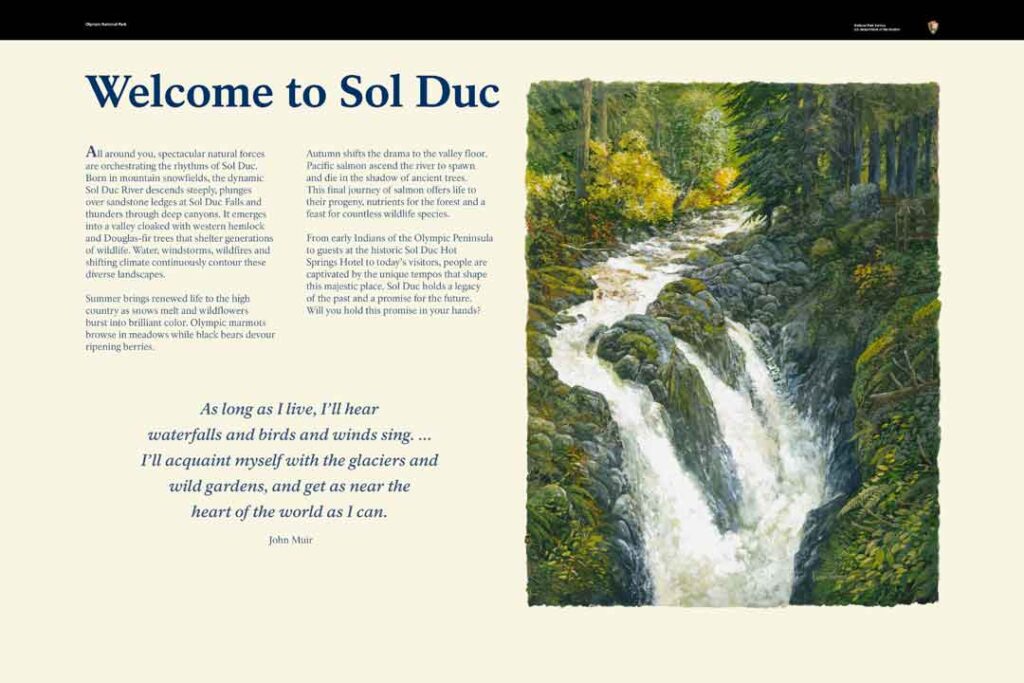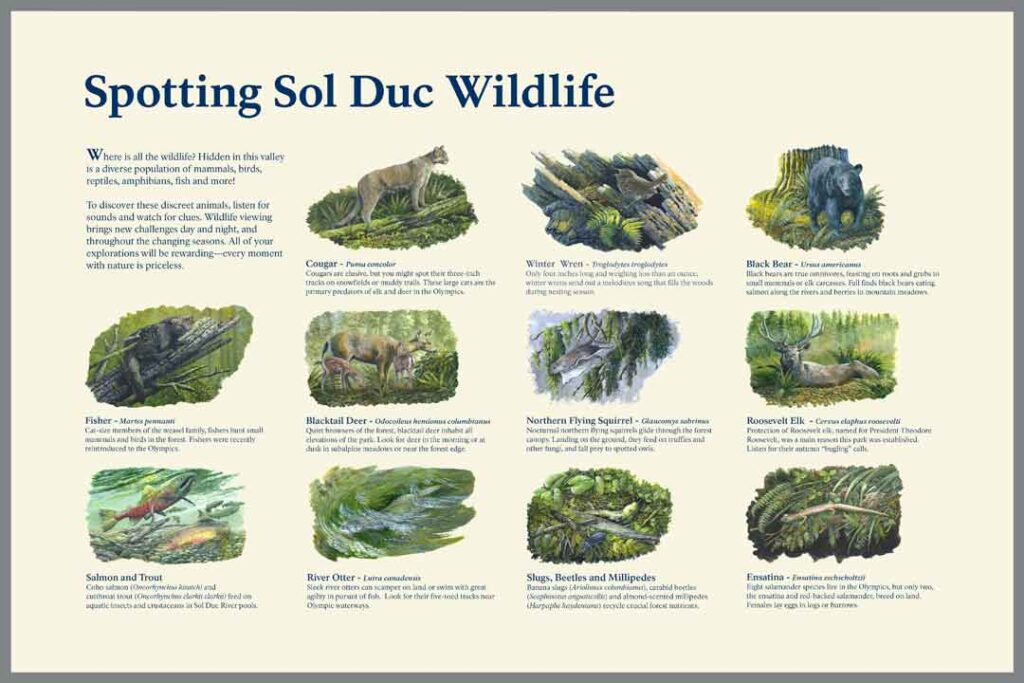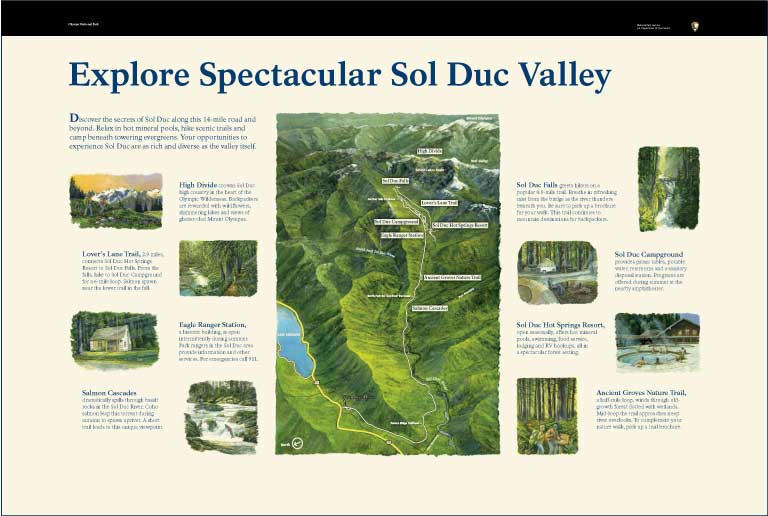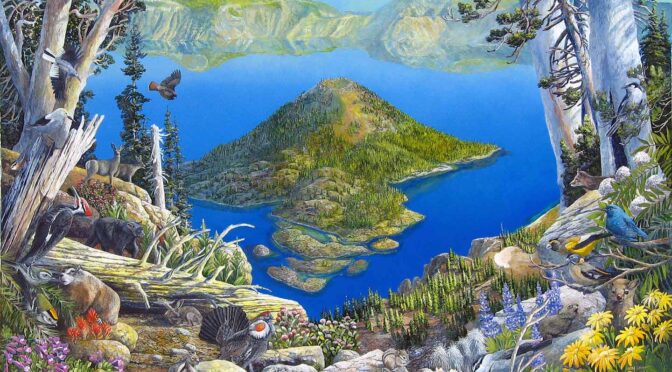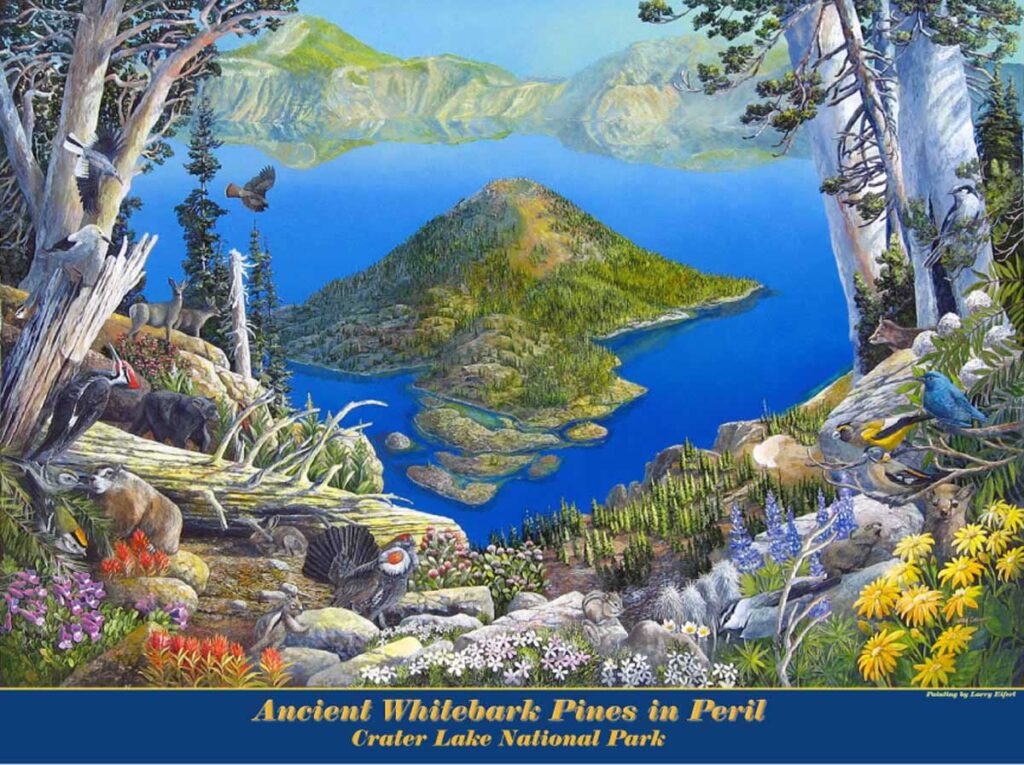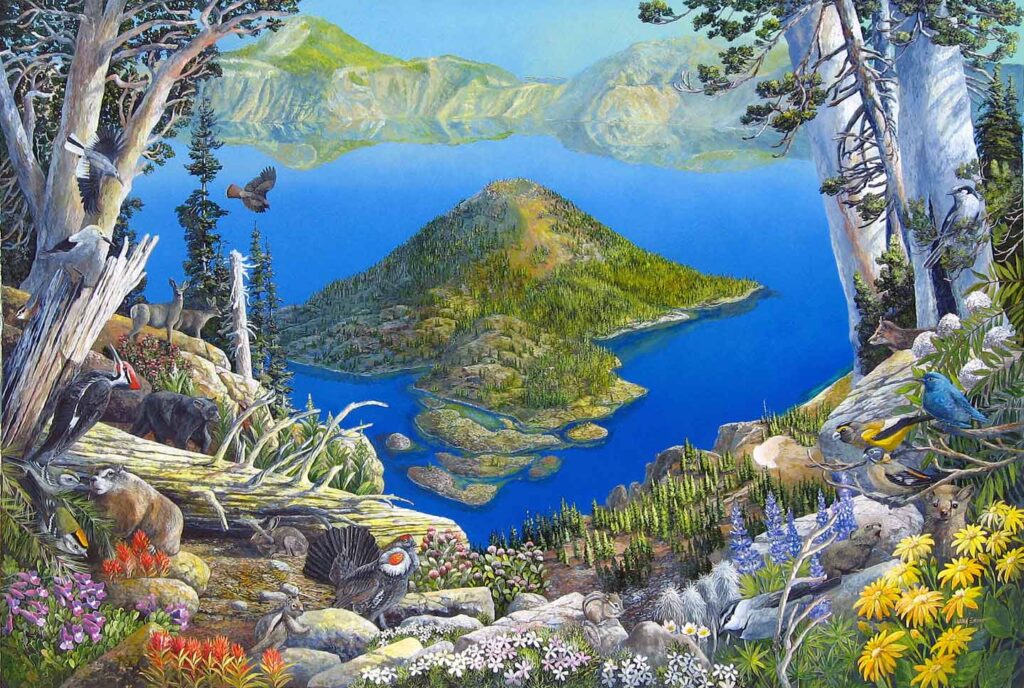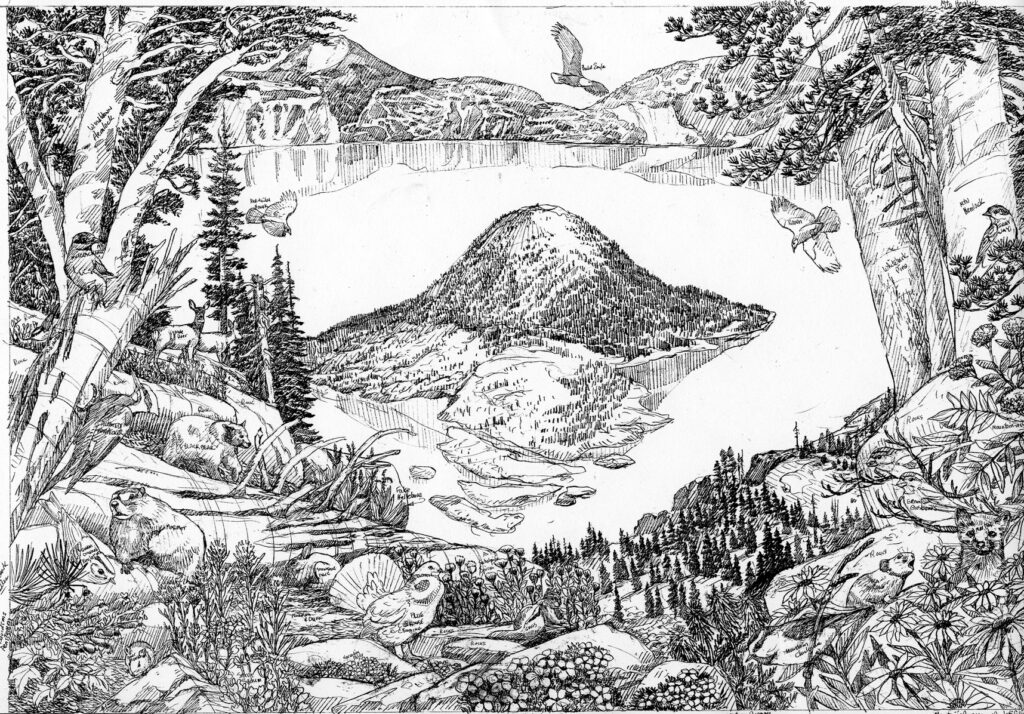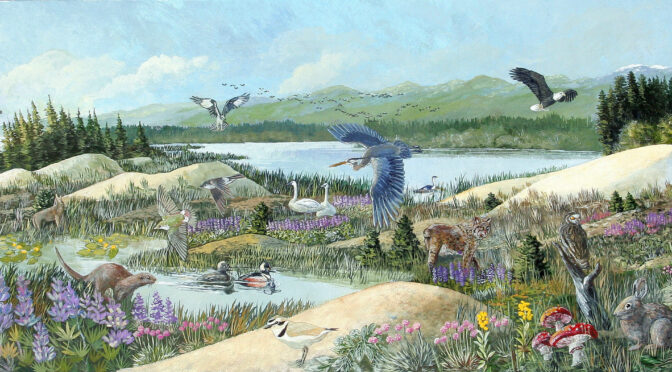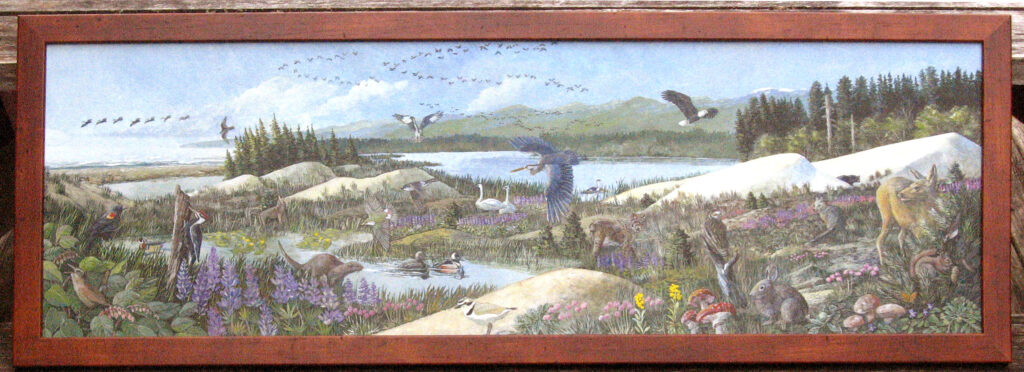(Click to enlarge so you can read the text by Janet Scharf, Olympic NP)
‘An art gallery in the woods,’ that’s what I like to call these paintings.
Thanks to the kind folks at the park, I now have 24 paintings, well, reproductions of them, scattered along the road in Olympic National Park’s Sol Duc Valley. This one was one of the first, and until recently I didn’t have a digital file of it for my portfolio. The fabricator finally sent it to me, so now I’m passing it along to all of you. It tells the story of the unseen-by-us happenings in the old-growth when the sun goes down, how all sorts of critters appear and carry on their lives when we’ve all gone home for the day. In the foreground, a flying squirrel is diggin’ ‘shrooms and upon hearing the rustle of forest duff, a northern spotted owl begins its predatory plunge from a high perch. The black-tailed deer is browsing oxalis and isn’t aware of the mountain lion’s stealthy approach. And the marbled murrelet is coming home on the last flight of the day, returning to it’s mossy nest with a load of herring for it’s chick from the distant Pacific 20 miles away.
I’ve always liked the idea of using my paintings to present an interpretive idea or story about nature. I learn about it. I paint it. I pass it along to the next guy. Outdoor fabrication technology is pretty good these days, so this panel will last for decades unless a 500,000-pound tree falls on it (which has happened). I love the thought of a car full of visitors driving up this beautiful road, eyes open in wonder at the scenery and pulling off to read this wayside panel – and suddenly they’re immersed in a painting telling a story about nature they never knew about. I think art should teach and inspire – and then move the viewer to positive future actions. Is this art? I’d say it is.
Thanks for reading this week.
Larry Eifert
Click here to go to the online blog this was posted to.
Click here to go to our main website – packed with jigsaw puzzles, prints, interpretive portfolios and lots of other stuff.
Click here to check out what Nancy’s currently working on with her photography. She has new work up of her garden after a morning rain.
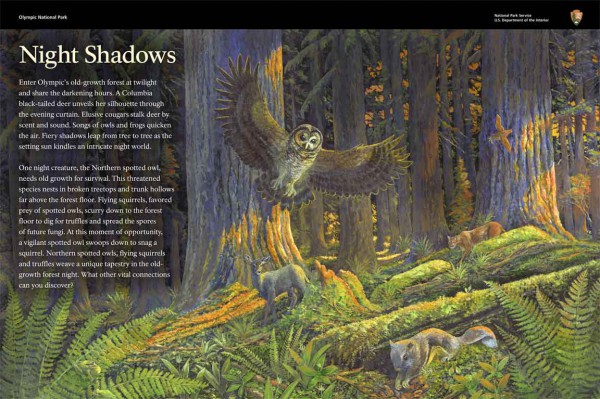
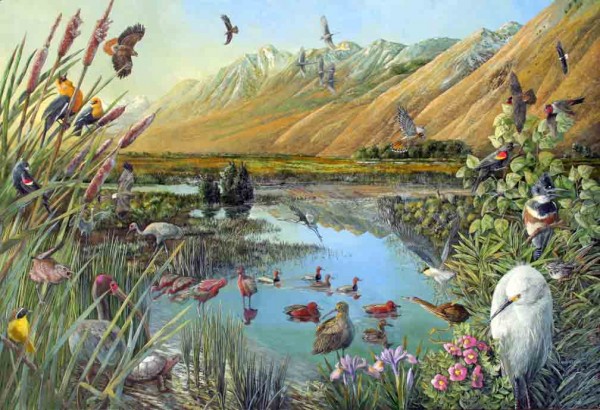
![brocklissslough[1]](http://larryeifert.com/wordpress/wp-content/uploads/2010/03/brocklissslough1-300x124.jpg)


